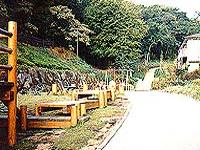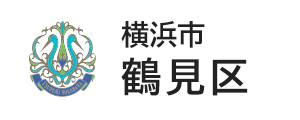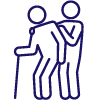- Yokohama-shi Top Page
- Tsurumi Ward Top Page
- Introduction of the ward
- Overview of Tsurumi Ward
- History of Tsurumi Ward
- 8th: Terao Castle in the Middle Ages wrapped in a riddle
- 8th: Terao Castle in the Middle Ages (Part 2) wrapped in a riddle
Here's the text.
8th: Terao Castle in the Middle Ages (Part 2) wrapped in a riddle
Last Updated November 7, 2024
Baba Inari Shrine (Terao Inari)
Terao Inari is enshrined at the foot of Nishiyama at the ruins of Terao Castle. At present, it is called Baba Inari because the place name became Baba, but in the old days it was called Terao Inari. In the Edo period, it became famous as Inari, where equestrian improvement could be achieved, and many visitors from Edo. There are many votive ema and stone monuments that tell this story. This Terao Inari, which has the rank of the Shoichi Phase Country Inari, is called "Shoichi Phase Country Inari" in "Baba Village Inarisha" in "New Edition Musashi Fudoki". I don't know what the words of my country are. People who learn equestrianism have been greatly impressed by praying to our company. At any time, they worship the Kiiden stables and worship the name of the country ... ", confirming that they were worshiped by the Kishu clan and Edo Castle during the Edo period. The signpost of "Terao Inari Road" at the junction with the Tokaido of the former Tokaido Tsurumi Village (currently in front of Tsurumi Library) has been rebuilt three times.
This Terao Inari became famous according to a legend related to Terao Castle owner Suwa Umanosuke.
According to "Tsurumi Kotaka Magazine" published in 1930, "This is once a place where Terao Castle owner Suwa Umanosuke established a Baba. Umanosuke was inherently poor at equestrianism. It is difficult for equestrianism as the Lord of the castle to go through the millenniums and make valor. So he prayed to Inari Shrine in the castle to improve equestrianism. One night, an old man appeared in his dream, and said, "I am Terao Inari, which I wished for. I feel the desire of my daily enthusiastic, and I will give you the better protection of equestrians. " It is said that Umanosuke's joy was terrible, and that equestrian was soon developed, and he was named among the ten warriors of Ujiyasu Hojo, and was added to the family of the Sagami people. Since then, nobody has said, the old tale of the prayer for equestrian improvement of Terao Castle's Suwa Umanosuke has been spread thanks to everyone, and there is no end to those who continue to pray for the safety of the samurai and the improvement of equestrian. ... " It is said that during World War II, the train soldiers visited the shrine in hope of Nagahisa Muun.
The names of Mr. Suwa and Terao exist in various parts of Musashi. In "Terao-mura, Iruma-gun" in "New Edition Musashi Fudoki", "It is said that Manosuke Suwa in the village is a castle. There is 200 Kanbun Terao Mikawanokami Suwa in the Hojo role book, and there is Manosuke Suwa, a resident of Musashi Terao in Odawara. Then he should know that he would occupy this land at the time of Suwa. However, there is also a trace of Mikawanokami Suwa in the branch of Baba Village in Tachibana-gun, and it is the historic site of his Baba. In addition, the old record of Kenko-ji Temple in Saiderao Village in the same county states, "Murauchi Shirohata Myojin is a lord of Terao Suwa in 1435." There is also a historic site of Suwa in Terao-mura, Chichibu-gun. It should be strange that Suwa calls Terao to the four castle ruins. "
At the Tsurumi History Society, he visited the ruins of Terao Castle in Iruma-gun and repeated verification, but has not yet been found in materials that clarify the relationship.
The fall of Terao Castle
In October of Eiroku 12 (1569), Shingen Takeda took the imaginary of Odawara Castle, where the defense was scarce after Ujiyasu Hojo joined the Imagawa area of Suruga. Takeda's army crossed the Usui Pass, entered Kasai in Edo, passed through Hirama (Kawasaki City) from Ikegami (Ota-ku, Tokyo), destroyed Inage Jurokugo, and ran from Tsurumi and Terao to Katakura and Kandaiji (Kanagawa Ward) to the Nobuko army (Hodogaya Ward). When the Takeda army passed through Tsurumi, Terao Castle lord Suwa Umanosuke was convened in Odawara to assist the Suruga army. There were only a few soldiers in Terao Castle, where the castle was absent. In anticipation of the lack of power to fight, Takeda's army said, "I passed by without burning the castle," according to Hojoki.
Kenko-ji's "Rei Book" recorded in Kyoho 16 (1731) states, "At the time of the fifth generation Manojo, Suwa was departed in Tensho 3 (1575)." There is a gap of six years from Eiroku 12 (1569) to Tensho 3 (1575), but there is no record that Terao Castle's Suwa Umanosuke returned to Terao Castle after passing the Takeda army. It is presumed that both the castle of Terao and the house of Suwa were decayed without the castle owner.
The Soto sect Kenko-ji Temple, located in Baba 1-chome, is said to be the origin of Terao Castle's Suwa Umanosuke. The temple crest of Kenko-ji Temple is Suwa Kaji, the crest of Suwa.
According to the "Yokohama City History Report", Kenko-ji Temple was described as "The monk of Ryusan-ji Temple in Higashi Tomioka Village, Sagami Aiko-gun (currently Higashi Tomioka, Kanagawa City) visited here and received the dependency of Umanosuke Suwa, the lord of Terao Castle. , Iu was erected by its protection. This is the temple, "but there is no description as a bodhi temple except for some Suwa's records in Kenko-ji's "Rei Book".

A few years ago, excavations were conducted on moats, earthworks, and rings, which were the only remains of the Warring States period in Tsurumi Ward.
References "Kenko-ji Magazine" "Terao Castle Hundred Story"
Responsibility: Hiroshi Yotsumoto and Mie Saito
Inquiries to this page
Tsurumi Ward General Affairs Department Ward Administration Promotion Division
Telephone: 045-510-1680
Telephone: 045-510-1680
Fax: 045-510-1891
Email address: tr-kusei@city.yokohama.lg.jp
Page ID: 205-224-554













